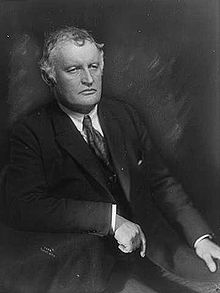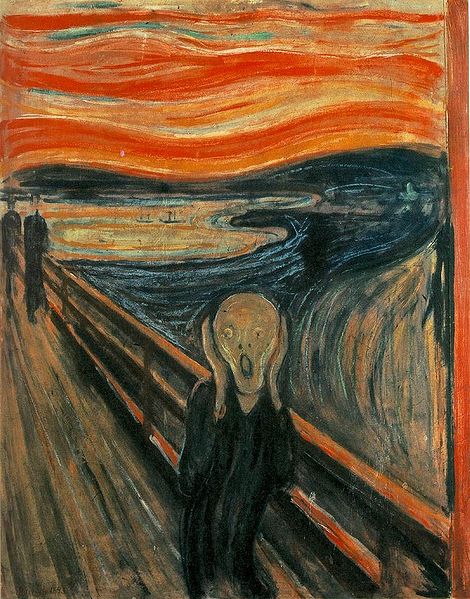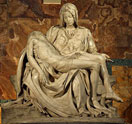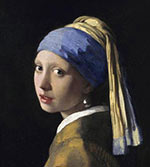
Edvard Munch was a Norwegian expressionist painter, who became an iconic painter of the Twentieth Century angst and uncertainty. He was believed to suffer from some form of bipolar disorder / manic depression and as Munch himself say, this depression influenced his paintings – perhaps best epitomised by the “Scream” – one of the most famous paintings of the Twentieth Century. His paintings built on the nineteenth-century symbolism movement to incorporate his own unique expressionism.
He had a difficult childhood, his mother died from tuberculosis when he was five, and he was brought up by his father who had a history of mental illness combined with an excessive religiosity. The family also lived close to the poverty line. In Munch’s own words he describes the pressures on him growing up.
“My father was temperamentally nervous and obsessively religious—to the point of psychoneurosis. From him I inherited the seeds of madness. The angels of fear, sorrow, and death stood by my side since the day I was born.”
This was a significant factor in why his art became focused on the expression of inner turmoil. He later became a close associate of Sigmund Freud. Freud was interested in clients childhood relationships with their mother and the subconscious.
Aged 22, he travelled to Paris where he met impressionist painters such as Claude Monet and Edouard Manet, he was deeply impressed by their creativity, but his style soon became more influenced by post-impressionists such as Gauguin and Cezanne.
“My fear of life is necessary to me, as is my illness. Without anxiety and illness, I am a ship without a rudder. My art is grounded in reflections over being different from others. My sufferings are part of my self and my art. They are indistinguishable from me, and their destruction would destroy my art. I want to keep those sufferings”
– Edvard Munch
Munch spent time in Paris and Berlin until he experienced a mental breakdown in 1908. As a result, he gave up his heavy drinking and in the next year, he returned to his native hometown in Oslo, Norway. He was a prolific painter and after his death, he had left provision for a nearly 20,000 paintings and drawings to be left with the Norwegian government. They set up the Munch museum of art to display his work to the public.
Famous paintings of Edvard Munch

The Scream (1893) (Originally called despair)
This is Munch’s best-known painting and is one of the best-known images in the world. It is one of the pieces in a series titled “The Frieze of Life.” In the series, Munch explored the themes of life, love, fear, death and melancholy. As with many of his works, he made several versions of the painting. One version was stolen in 1996 and The Madonna was stolen from the Munch-museum in Oslo, Norway, in 2004, but in 2006 Norwegian police found it together with another picture that was stolen at the same time, Madonna.
The Frieze of Life themes come back throughout Munch’s work. These themes can be seen in paintings such as The Sick Child (1886), A portrait of his deceased sister Sophie, (1893–94), Ashes (1894), and The Bridge. This painting showed figures having faces with no features, or even having no faces at all. It also showed threatening shapes of heavy trees and houses above the figures. Munch often portrayed women either as frail, innocent sufferers or as lurid, life-devouring vampires. Munch analysts say this reflects his sexual anxieties.
Symbolism of Munch
Over the years, Munch became an artist interested in symbolism. He was interested in the internal message of the object – the emotions and inner thoughts. He was not so interested in replicating what the eye sees, but also what the mind thinks and feels. Some of his paintings were quite colourful, but he did not see this as a primary objective of his art.
“In common with Michelangelo and Rembrandt, I am more interested in the line, its rise and fall, than in color. ”
– Edvard Munch
Later years and death
Towards the end of his life, he lived mostly in seclusion in his estate in Ekely, nearly Oslo. In 1940, when Munch was 76, the Germans invaded Norway. His art was declared to be “degenerate” and he feared his paintings would be taken. Munch died in his house at Ekely near Oslo on 23 January 1944.
“From my rotting body, flowers shall grow and I am in them, and that is eternity.”
– Edvard Munch
The Scream at Amazon
Related pages




